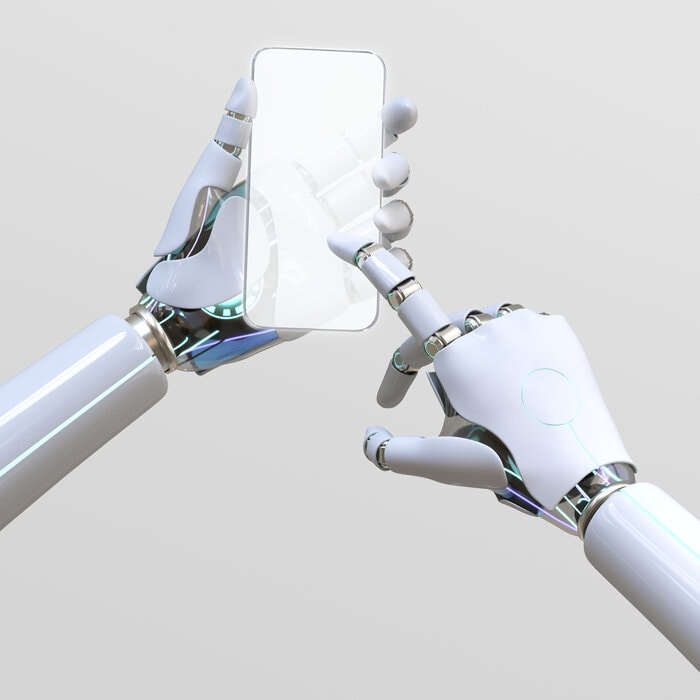Guide to Digital Transformation
Read our in-depth guide to learn why Digital Transformation is your key priority and how to make it work for your enterprise
Download Full PDF Version
In This Digital Transformation Guide
This is an abridged version of our guide. For the full version, please download the PDF above.
01 - Every Enterprise has a DX Opportunity
02 – Interpreting what DX Means to YOU
03 – Your Digital Ecosystem
04 – Creating FUSION Across your Business
05 – Your Jump-Off Point
06 – Choosing Your Tools for DX
07 – Achieving early-stage wins
08 – Writing a DX Plan that Edits Out Risk
09 – Cutting Your Cloth for the Long Haul

Section 1 – Every Enterprise has a DX Opportunity
While it remains the purpose of every business to win customers,
how that’s achieved in a digital era is different to what came
before. The spirit of a digital enterprise is to serve niche customer
groups better than other providers, to scale quickly, and to adapt
faster than rivals.
Many data-related technologies have emerged in the last decade to help businesses to compete in hyper-competitive online markets.
customers include artificial intelligence, blockchain, big data, cloud
computing, the Internet of Things, 3D printing, virtual reality, and
drones.
Section 2 – Interpreting what DX Means to YOU
The total value of global retail eCommerce sales will reach 1$3.45T in 2019 and by 2040, around 95% of all purchases are expected to be via eCommerce. Small wonder that all enterprises want to trade online and move forward with a digital transformation.
Digital Transformation is game-changing, but to maximize the potential of YOUR program, you’ll need to re-think your business model in one of four ways, namely, to bring more value to customers by:
1. Improving their access to your offerings
2. Buying experience
3. Improving their service experience
4. Improving the product or service you supply.
Source: (1) ecommercestaistics

Section 3 – Your Digital Ecosystem
To leverage the potential of digital technologies, your enterprise will
need to create a digital ecosystem that’s able to embrace new
technologies and adapt to change affordably and expediently.
Your DX ecosystem should support change by progressively orchestrating your business model.
Employees too understand the impact DX can have in better
supporting their fulfillment of work objectives. A recent survey found
that three-quarters of employees said having the digital tools they
need at work makes them more productive. More than half said they
expected DX to make them more successful by empowering them to
better manage workflow if provided with the IT tools they needed,
and 42% said it speeds up boring tasks.
Section 4 – Creating FUSION Across your Business
DX sees Enterprise IT transitioning from a subject that happened in
back-offices – to automate processes by equipping workers with
computer processing tools – to something that customers, partners
and suppliers can harness themselves.
This shift from back-office to front-office means that no longer is
IT about enforcing best practice into processes by installing
Systems of Record that every other competitor also happens to use.
DX has created a demand for two‐speed IT… because coded legacy
IT is slow. DevOps teams need fast, code‐less tools to implement
digital transformation projects that lower skill demands and
produce sustainable results.
Enterprise IT becomes a game-changer—but only when it’s tailored to deliver the unique characteristics of the business model that exists in the enterprise.
Section 5 – Your Jump-Off Point
Before you can implement a digital transformation, you need to know how to bring more value to customers—so you can prioritize your efforts. You will also need to know in digital how your processes and systems work today. Most organizations lack a single view of their critical data. There are 10 base data-sets that go to build your enterprise ‘digital DNA.’
Having the ability to reference and re-use these data sets is essential to grow and adapt your processes—to bring them in tune with your business model design.
The 10 bases of your enterprise digital DNA are:
Legal Entities, Locations, Organizational Design Structure (Org. Units), People, Roles, Processes, Actions, Systems & Data, Stakeholders (Shareholders, Customers, and Suppliers), Assets, and People.
Section 6 – Choosing Your Tools for DX
Adopting a top-down approach to orchestrating your business
model will result in a single, unifying digital platform that
transforms your business and its ability to compete in the digital
age.
While all organizations adopt a small number of business-critical
applications for finance, HR, and sales management, these aren’t
designed to serve the processes that underpin your business model.
These are the ways of working that define your customer value
advantage. They represent the unique differences in your offer
compared to competitors. To automate them, you will need to
create lots of applications, and then have the means to affordably
adapt them over time.

Section 7 – Designing Digital Transformation Apps FAST
Any form of design activity is wasteful. Making apps is a creative
process and it’s uncommon to get everything right first time. It’s better to keep growing and learning along the way than attempting ONE BIG LEAP in an attempt to satisfy everyone.
Experience has shown the best way to build apps is to start small and ‘fail-fast’ by adopting a prototyping approach.
Modern businesses are adopting FUSION TEAMS to bridge between THE BUSINESS and IT SKILLS. It means your apps can be developed in workshops using near-real-time design methods.
One example of this comes in the form of Live Wireframes. These are renditions of your app design that allow app designers to create ready-to-publish apps with stakeholders FAST!

Section 8 – Writing a DX Plan that Edits Out Risk
There are lots of risks to DX because it’s a major project. They include:
- Weak or misaligned leadership – Like any agent of change, leaders may choose to dismiss the importance of digital transformation as being ‘a bit of a fad’ and instead choose to stick their heads in the sand.
- Conflicting IT strategies – Enterprise IT market analyst firm Gartner predicts that companies looking to implement a digital transformation may have to adopt a two-speed approach to IT to overcome the sluggish pace of innovation experienced when working with incumbent IT teams charged with ‘keeping the lights on.’
- Department leaders at War – When not approached as a top-down program, department leaders can find themselves competing to lead the DX charge or be left behind when new budgets for tech innovation surface.
- An absence of ‘fast-acting IT’ – Not every enterprise has invested in technology tools equipped to rapidly design, integrate, deploy and run apps for DX.
Section 9 – Cutting Your Cloth for the Long Haul
Both market analysts and practitioners agree, the road to becoming a digital leader is paved with challenges, but those that survive the next decade are likely to be the businesses that get there – eventually. For many, the money and resources needed for DX will need to be found through back-office economies, feeding innovation from savings gained through automation.
- Companies with digital platforms enjoyed an annual boost in earnings before interest and taxes (EBIT) of 1.4%, compared with the 0.3% gains of non-players. And the step-up effects are cumulative, with EBIT improvements adding to early-year gains, so over a five-year period, platform players may capture an additional 10% in EBIT growth—a company’s 2% EBIT growth, for example, would increase to 2.2% in year five.
- Digital transformation is expected to grow at CAGR of 20.1 percent from 2017 to 2025 by streamlining business processes.

